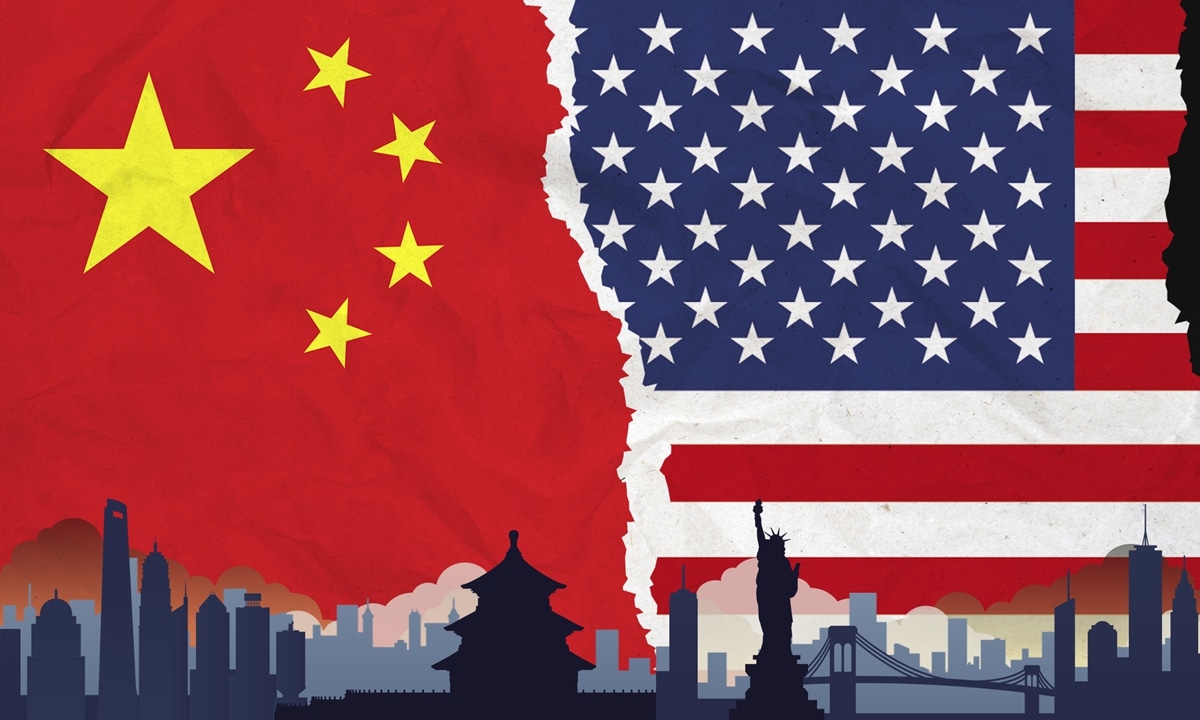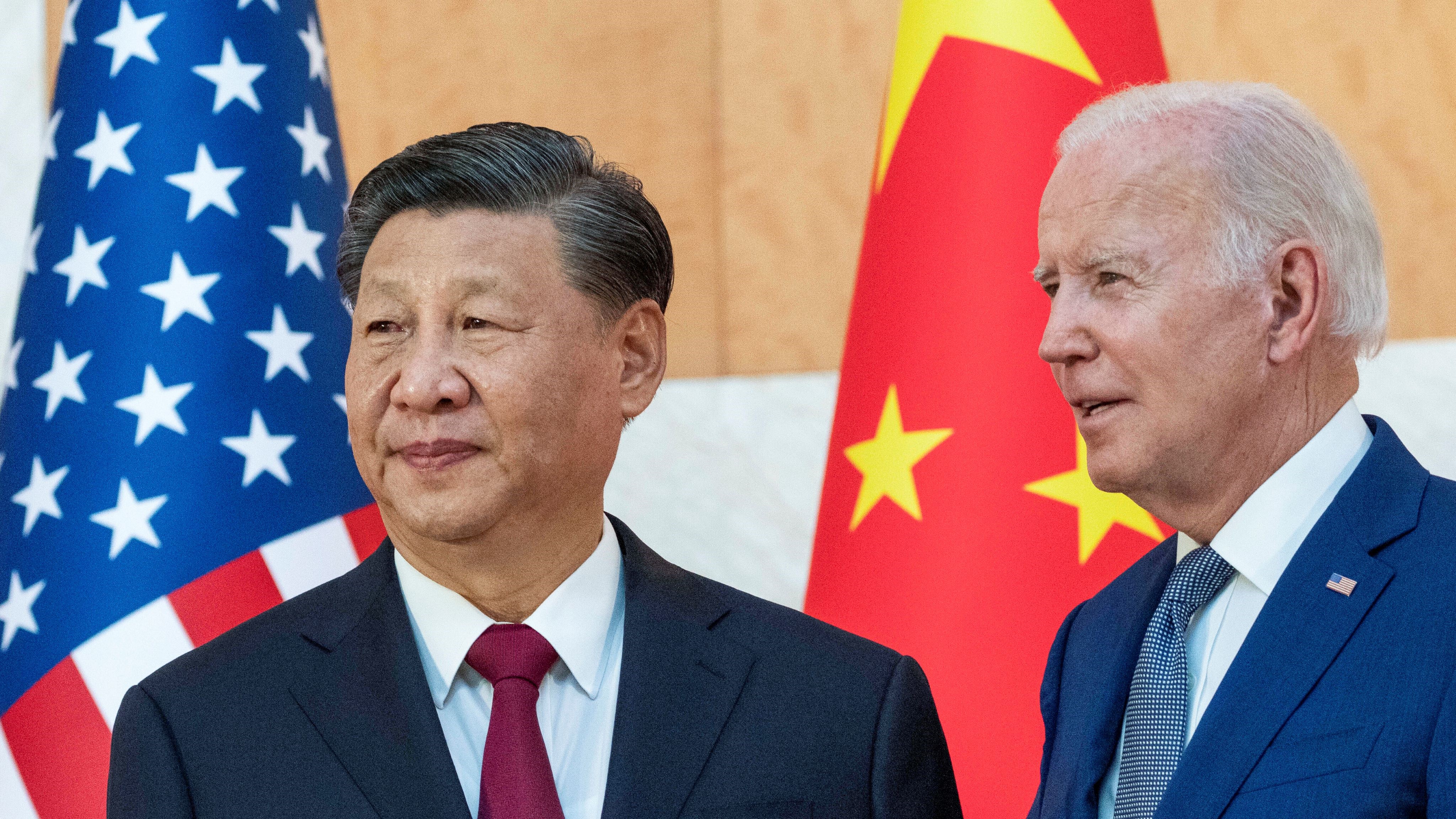News
US Tensions With China Are Fraying Long-Cultivated Academic Ties. Will The Chill Hurt US Interests?

WASHINGTON — The U.S. Fu Xiangdong was a Chinese virology student who moved to the United States to study biochemistry in the 1980s. He held a distinguished post in California and was pursuing promising Parkinson’s disease research more than three decades later.
On the other hand, Fu is now conducting research at a Chinese institution. His American career was ruined as US-China ties deteriorated, casting doubt on his cooperation with a Chinese university. He eventually resigned.
Fu’s narrative parallels the growth and fall of intellectual engagement between the United States and China.
Beginning in 1978, such cooperation grew for decades, virtually immune to variations in the two countries’ relations. It is now in decline, with Washington considering Beijing a strategic adversary and mounting concerns about Chinese surveillance. The number of Chinese students in the United States is declining, and collaboration between the United States and China in research is dwindling. Academics are avoiding possible China projects out of worry that seemingly little mistakes could jeopardize their careers.
US Tensions With China Are Fraying Long-Cultivated Academic Ties
This decline is affecting more than just students and researchers. Analysts say it will reduce American competitiveness and hamper global efforts to solve health challenges. Collaborations in the past have resulted in substantial improvements, such as in influenza surveillance and vaccine development.
“That’s been really harmful to U.S. science,” said Deborah Seligsohn, a former US ambassador in Beijing who is now a political scientist at Villanova University. “We are producing less science because of this falloff.”
Given the heightened US-China relations, some believe the promise of scientific achievements must take a back seat to security concerns. According to them, such cooperation benefits China by providing it with crucial economic, defence, and technological information. They also believe the Chinese government is monitoring and harassing dissidents in American institutions.
These concerns were central to the Justice Department’s China Initiative, a program launched in 2018 by the Trump administration to discover acts of economic espionage. While the effort did not result in the capture of spies, it did impact researchers in American schools.
Gang Chen, a mechanical engineering professor at the Massachusetts Institute of Technology, was charged in 2021 under the program with concealing ties to the Chinese government. Prosecutors later dropped all accusations, but Chen’s research group was disbanded. He stated that his family had a difficult experience and is still recovering.
Chen stated that inquiries and unfair prosecutions like his “are pushing out talents.”
“That’s going to hurt U.S. scientific enterprise, hurt U.S. competitiveness,” he said.
The Biden administration stopped the China Initiative in 2022, but other initiatives are aimed at Chinese-connected researchers.
In Florida, a state rule aimed at reducing foreign influences has sparked fears that Chinese students may be essentially barred from labs at the state’s public colleges.
This month, a bipartisan group of Republican senators raised worry about Beijing’s influence on American campuses through student groups, urging the Justice Department to investigate whether such groups should be registered as foreign agents.
US Tensions With China Are Fraying Long-Cultivated Academic Ties
According to Miles Yu, director of the Hudson Institute’s China Center, Beijing has used American higher education and research institutes to modernize its economy and military.
“For some time, out of cultural, self-interest reasons, many people have double loyalty, erroneously thinking it’s OK to serve the interests of both the U.S. and China,” he said.
The United States-China Science and Technology Cooperation Agreement, signed in 1979, was slated to expire this year. Congress extended the pact by six months in August, but its future remains to be determined.
According to Nicholas Burns, the United States ‘ ambassador to China, if a new agreement is reached, it should consider new scientific and technological breakthroughs.
According to Burns, just 700 American students were studying in China, compared to almost 300,000 Chinese students in the United States, down from a peak of around 372,000 in 2019-2020.
On American university campuses, practically all Confucius Institutes, a Beijing-backed Chinese language and culture program, had dissolved by October. According to the US Government Accountability Office, their number has decreased from around 100 in 2019 to fewer than five.
In 2018, the National Institute of Health launched an investigation into foreign links by requesting that hundreds of American schools investigate if their faculty members may have broken laws governing the use of government funds, typically in situations involving cooperation with Chinese institutions.
The NIH probe focused on Fu, who was then a professor at the University of California, San Diego, and his connections with Wuhan University. According to the local news outlet La Jolla Light, Fu argued that federal funds were never used for work there, but the university decided against him.
Charles Lieber, a former chair of chemistry and chemical biology at Harvard institution, was found guilty of lying to the federal government about his links with a Chinese institution and a Chinese government talent-recruitment program in a China Initiative case in December 2021.
US Tensions With China Are Fraying Long-Cultivated Academic Ties
According to Chen, collaborations that were once welcomed have suddenly become challenging. He claimed that disclosure standards had been unclear and that such collaborations had been praised in many situations.
“Very few people in the general public understand that most U.S. universities, including MIT, don’t take on any secret research projects on campus,” Chen said. “We aim to publish our research findings.”
University campuses have suffered as a result of the probes. “People are so fearful that, if you check the wrong box, you could be accused of lying to the government,” Chen said.
According to a peer-reviewed academic study published in the Proceedings of the National Academy of Sciences journal in June, the China Initiative has undoubtedly produced widespread fear and anxiety among scientists of Chinese heritage.
The study, which polled 1,304 scientists of Chinese heritage working at American colleges, found that many were considering leaving the country or ceasing to seek federal funds, according to the researchers.
An analysis of research papers in the PubMed database revealed that, as of 2021, U.S. scientists still co-wrote more papers with Chinese scientists than with scientists from any other country, but those with a history of collaborating with China saw a decline in research productivity after 2019, shortly after the NIH investigation began.
The study’s findings, which will appear in the PNAS journal before the end of the year, indicate that the impact of US-based academics collaborating with China has decreased by 10%.
US Tensions With China Are Fraying Long-Cultivated Academic Ties
“It has a chilling effect on science,” said Ruixue Jia, the NIH investigation’s main researcher. “While researchers worked to complete existing collaborative projects, they were hesitant to start new ones, and the results could worsen.” Both countries have suffered.”
Fu’s name surfaced on the website of Westlake University, a private research university in the Chinese city of Hangzhou, three months after he resigned from the California school. Fu directs a lab at Westlake that studies RNA biology and regenerative medicine.
Guan Kunliang, a fellow scientist in San Diego who was being probed, joined Fu in August. Guan has been barred from applying for NIH grants for the next two years. Guan’s job was recovered, but his lab had downsized. He is now re-establishing a molecular cell biology lab at Westlake.
According to Li Chenjian, a former vice provost of Peking University, talent loss to China is a tricky issue, and the concern may be overstated because the United States remains the go-to spot for the world’s greatest minds and has abundant talent.
According to the National Science Foundation, from 2005 to 2015, more than 87% of Chinese students who got doctorates in the United States intended to stay in the country. The percentage dipped to 73.9 in 2021 but increased to 76.7 in 2022, exceeding the 74.3% average for all foreign students who received research doctorates in the United States.
Rao Yi, a distinguished neurobiologist who returned to China from the United States in 2007, stated that American actions about the China Initiative were “morally wrong.”
“We will see how long it will take for the U.S. government and its morally upright scientists to correct such mistakes and come around to see the bigger picture of human development, beyond petty-mindedness and shortsightedness,” he said. “Throughout history, it is always the morally corrupt governments which advocate the blocking of scientific communication and persecution of scientists.”
SOURCE – (AP)
News
Trudeau Rocks to Taylor Swift While Montreal Burns

Prime Minister Justin Trudeau has come under fire yet again after a video surfaced on X, showing him dancing at a Taylor Swift performance while anti-Nato protestors ransacked downtown Montreal.
Trudeau attended Taylor Swift’s concert in Toronto on Friday night. Before Taylor Swift approached the stage, X shared a viral video of him dancing and singing along to the song “You Don’t Own Me.”
The image of Trudeau dancing amid violent protests in Montreal generated widespread indignation online. Some social media users even compared Trudeau to the ancient Roman dictator Nero, known for “fiddling while Rome burned.”
Don Stewart, a Member of Parliament (MP) representing part of Toronto, called out the prime minister in a post on X.
Lawless protestors run roughshod over Montreal in violent protest.
The Prime Minister dances.
This is the Canada built by the Liberal government.
Bring back law and order, safe streets and communities in the Canada we once knew and loved. pic.twitter.com/PVJvR6gtmf
— Don Stewart (@donstewartmp) November 23, 2024
“Lawless protesters run roughshod over Montreal in violent protest. The Prime Minister dances,” Stewart wrote. “This is the Canada built by the Liberal government.”
“Bring back law and order, safe streets and communities in the Canada we once knew and loved,” the MP added.
On Saturday, the day after Taylor Swift’s concert, Trudeau condemned the anti-NATO protests, calling them “appalling.”
Anti-NATO activists set off smoke bombs and marched through Montreal’s streets waving Palestinian flags. According to the Montreal Gazette, rioters set fire to automobiles and battled with police.
Pro-Palestinian protests
Protesters also tossed tiny explosives and metal objects at officers. At one point, the mob torched an effigy of Israeli Prime Minister Benjamin Netanyahu. Police used tear gas and batons to disperse the gathering, and three persons were arrested for attacking officers and impeding police operations.
Masked protesters were seen burning flares and bashing storefront windows in videos and photographs shared on social media. Pro-Palestinian protests have been taking place across Canada since the Israel-Gaza conflict began late last year.
Critics have lambasted Trudeau for doing nothing to stop the violent pro-Palestinian marches, with some claiming he has fueled anti-Israel sentiment in Canada.
On Friday, Trudeau stated that Canada would respect the orders of the International Criminal Court (ICC), which issued an arrest warrant for Mr Netanyahu, even if it meant arresting the Israeli prime leader on Canadian soil.
Related News:
Trudeau Called the Greatest Threat to NATO
News
Calgary Zoo Admits Human Error in Death of Baby Gorilla

The Calgary Zoo has admitted in a public statement that a zookeeper’s negligence caused the death of a 2-year-old baby gorilla. Eyare, a newborn gorilla, died last week after being slammed in the head by a hydraulic door.
The accident occurred when a zoo worker attempted to separate Eyare from the rest of the gorilla tribe for a solitary training session.
The gorilla died from significant head injuries, according to the zoo’s statement.
“This tragedy has struck us all in the deepest way imaginable,” Colleen Baird, director of animal care at the Calgary Zoo, said during a news conference. “Eyare’s brief but meaningful existence gave so much joy to our community, and all will sorely miss her. We will do everything possible to prevent repeat accidents.”
According to Baird, the staff member involved was immediately removed from the workplace and will be reassigned to another area of the zoo. The Calgary Zoo stated that it would take preventive steps, such as specialist personnel training and animal behavioral training, to avoid a similar incident.
Calgary Zoo Questioned
It is not the first time an animal at the zoo has died from negligence at the Calgary Zoo. A capybara was accidentally crushed by a hydraulic door similar to the one that killed Eyare in 2019.
An otter died in 2016 after being entangled in an “unauthorized” pair of jeans that a zookeeper had dropped in its enclosure. In 2013, a penguin died in “a freak accident” after swallowing a stick.
Animal Justice, a Canadian group that promotes animal welfare, has called for an independent investigation of animal safety and oversight at the Alberta facility.
“The Calgary Zoo appears to have a higher rate of animal deaths compared to other zoos, and in light of Eyare’s death there should be a systematic review of the zoo’s operations and practices, conducted transparently by the government or another outside party,” according to Camille Labchuk, the executive director of Animal Justice.
The Calgary Zoo refuted that it has more animal deaths than other zoos, emphasizing that it adheres to operating requirements and has maintained accreditation by the Association of Zoos and Aquariums’ independent Accreditation Commission since 1978.
“We love and care for more than 4,000 animals representing over 100 species that call our zoo home,” stated a Calgary Zoo representative.
“Human error-related deaths in animals are quite infrequent. We have lost two animals in the last ten years: a North American river otter in 2016 and ‘Eyare’ this week.
While rare, even one human-caused death is too many. These unfortunate instances have served as vital learning experiences, prompting us to examine and tighten protocols to provide the greatest level of care.”
Baird said at the news conference that using hydraulic doors is “common practice with accredited zoos,” adding that the facility will consider switching to alternate doors to improve safety.
The Calgary Zoo, which established the Wilder Institute in 2021, caters to nearly 4,000 creatures, including six more western lowland gorillas.
Related News:
Beluga Whales Dies at Canada’s Marineland
Outrage Erupts After 17th Beluga Whale Dies at Canada’s Marineland
News
Canada’s Lotto Max Jackpot Climbs to $80M

Lotto Max in Canada has reached $80 million for only the second time in Canadian lottery history. Friday’s draw sought a winner for a $75 million pool, but the top reward remained unclaimed as of Saturday, increasing the jackpot.
Only once did the jackpot reach $80 million in September, when it broke the previous record. Before that, the prize was $75 million, a record.
The Lotto Max prize maximum was boosted earlier this year, enabling for jackpots of more than $70 million. The cap is now at $80 million.
While a greater fee may encourage more people to play, the odds of winning the lottery remain extremely low.
According to the Ontario Lottery and Gaming Corporation, the odds for a $5 ticket are around one in 33,294,800.
While there was no jackpot winner in Friday’s draw, someone did match six of the seven winning numbers, plus a bonus, earning them a payout of more than $320,000.
Lotto Max History
Lotto Max is one of three national lottery games in Canada, overseen by the Interprovincial Lottery Corporation. The game was introduced on September 19, 2009, and its inaugural draw occurred on September 25, 2009. It replaced Lotto Super 7.
The odds of winning the Lotto Max are 1 in 33,294,800. This is correct to a point but misleading.
Let’s have a look at the rules:
- Players choose 7 numbers out of 50
- Numbers cannot be repeated
- Numbers are automatically sorted into ascending order
- Each play buys 3 lines
- Each play costs $5
Seeing that players choose 7 out of 50 non-repeating numbers, the equation for the total number of possible combinations (this is different from permutations where the order in which the numbers appear is significant) when playing the Lotto Max is 50! / (7! x 43!)
-
Politics2 weeks ago
Trudeau Orders Facebook to Block Australian Presser Video
-
Business4 weeks ago
Canada CBC News CEO Catherine Tait Recalled to Parliamentary Committee
-
Celebrity4 weeks ago
Shaun White’s Proposal To Nina Dobrev Was Romantic Gold
-
Tech4 weeks ago
Apple Launches The IPhone Into The AI Era With Free Software Update
-
News3 weeks ago
Pro-Khalistanis Sikhs Attack Hindu Temple in Brampton
-
Food4 weeks ago
Starbucks Is Making A Popular Add-On Free Of Charge
































